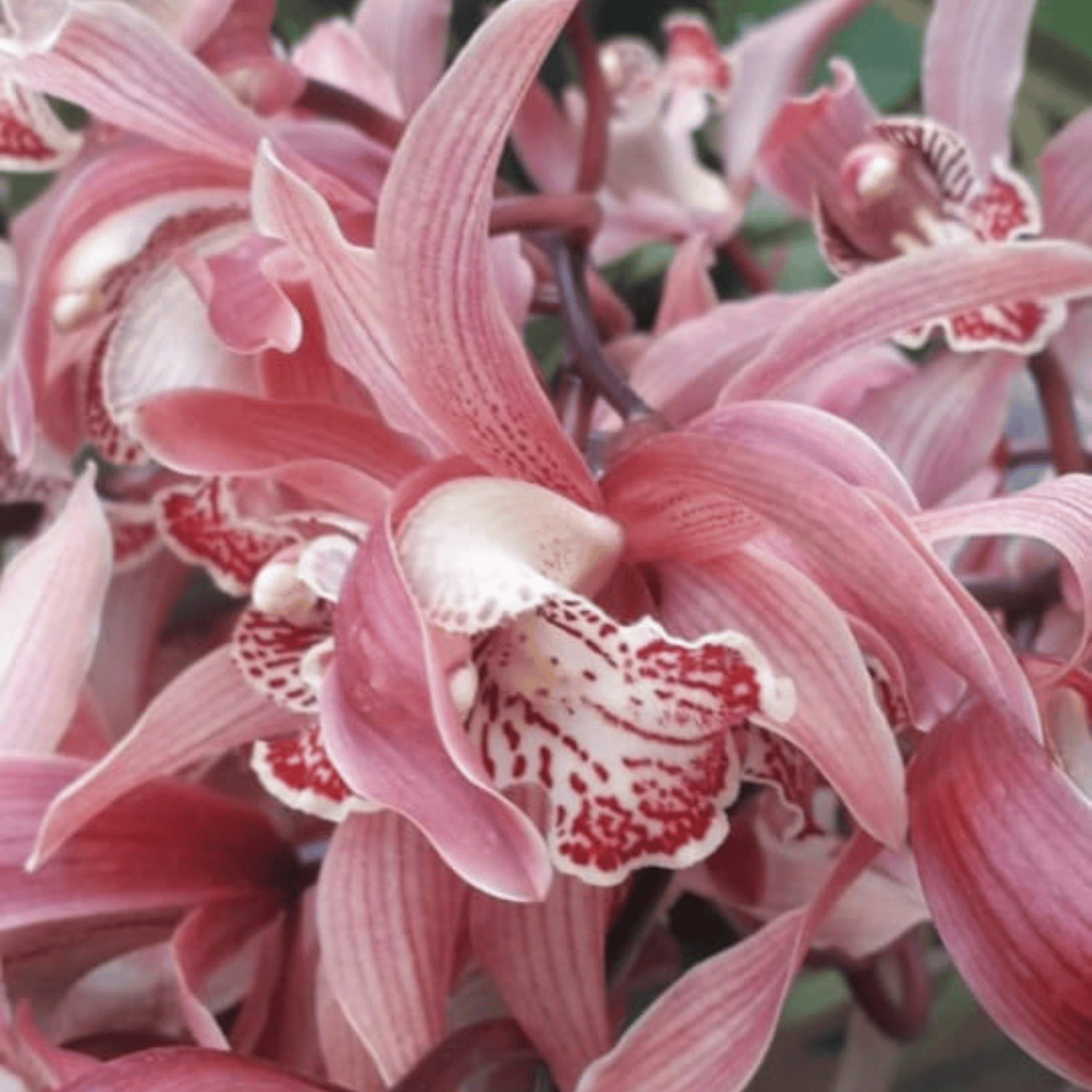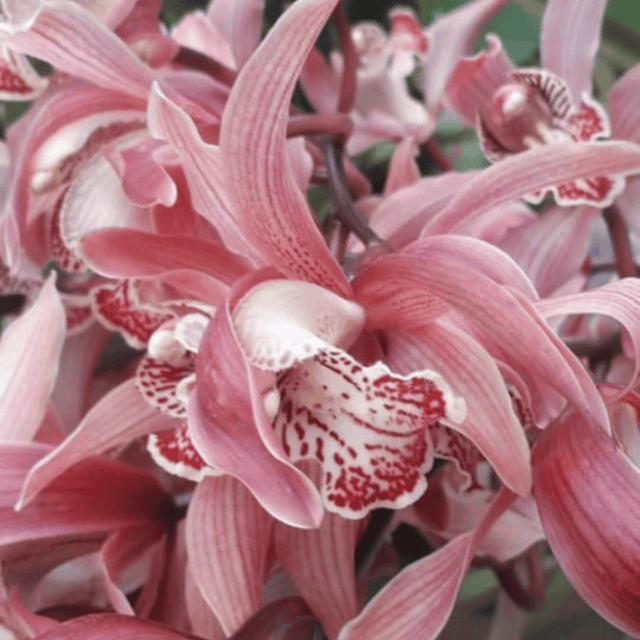₹499₹259
₹499₹259
₹499₹259
₹499₹259
₹499₹259
₹300₹258
₹599₹305
₹499₹259
Himalayan Nursery
Sold By : Himalaya Nursery
₹400₹175
₹700₹325
₹789₹339
₹599₹289
₹499₹289
₹350₹244
₹299₹248
₹1,200₹581
₹650₹349
₹600₹320
₹299₹249
₹1,199₹450

Orchids are typically not grown from bulbs; they are cultivated from specialized structures called pseudobulbs or rhizomes. If you're referring to an orchid variety with red flowers, it's important to know the specific species or hybrid name to provide accurate care information. Here are general guidelines for growing orchids:
Light: Orchids usually prefer bright, indirect light. Avoid direct sunlight, as it can scorch the leaves.
Temperature: Most orchids thrive in temperatures between 60-80°F (15-27°C) during the day and a slightly cooler range at night.
Humidity: Orchids often appreciate higher humidity levels. If the air is dry, you can increase humidity by placing the orchid pot on a tray filled with water and pebbles or using a humidifier.
Watering: Allow the orchid's growing medium to dry out slightly between waterings. Water thoroughly when needed, but avoid overwatering, as orchids are susceptible to root rot.
Potting Medium: Orchids are commonly grown in a well-draining orchid mix that often includes bark, sphagnum moss, and perlite. They are usually not planted in traditional soil.
Fertilization: Use a specialized orchid fertilizer and follow the recommended dilution and application frequency. Fertilize during the growing season (spring and summer) and reduce or eliminate feeding during the dormant period.
Potting: Repot orchids when the growing medium breaks down or when the orchid outgrows its pot. Use fresh orchid mix and consider repotting every 1-2 years.
Air Circulation: Orchids benefit from good air circulation. Avoid placing them in stagnant air, and ensure good ventilation around the plant.
If you have specific information about the orchid variety or hybrid you're referring to as "Red Star," it would be helpful to provide the exact name for more accurate care recommendations. Different orchid species and hybrids can have specific care requirements.
Choose your location
Please provide your delivery pincode to see products available in your area
MRP ₹500 Inclusive of all taxes
Non Returnable
Age : 1 years
Bare Rooted
Partial Shade
Annual Bloom
Medium Maintenance
Year-Round
Height : 6 inches (Approx)
COD (Cash On Delivery) On request
🎁Gift Coupons: Share your unboxing video & receive an exclusive gift coupon as a thank-you!
Share here
🚫No Claims After Repotting: If a plant is transferred to another pot and gets damaged, no claims will be accepted. Re-potting is at your own risk.
📸Unboxing Video Required: To claim a refund or replacement for any product, you must share an uncut unboxing video upon receiving the item.
⏳Raise Claim Within 24 Hours: To be eligible for any refund/replacement, raise a claim within 24 hours of delivery.(For plants only, for other categories the claim window is 5 days)
| # | Attribute | Value |
|---|---|---|
| 2. | brand | Himalayan Nursery |
Orchids are typically not grown from bulbs; they are cultivated from specialized structures called pseudobulbs or rhizomes. If you're referring to an orchid variety with red flowers, it's important to know the specific species or hybrid name to provide accurate care information. Here are general guidelines for growing orchids:
Light: Orchids usually prefer bright, indirect light. Avoid direct sunlight, as it can scorch the leaves.
Temperature: Most orchids thrive in temperatures between 60-80°F (15-27°C) during the day and a slightly cooler range at night.
Humidity: Orchids often appreciate higher humidity levels. If the air is dry, you can increase humidity by placing the orchid pot on a tray filled with water and pebbles or using a humidifier.
Watering: Allow the orchid's growing medium to dry out slightly between waterings. Water thoroughly when needed, but avoid overwatering, as orchids are susceptible to root rot.
Potting Medium: Orchids are commonly grown in a well-draining orchid mix that often includes bark, sphagnum moss, and perlite. They are usually not planted in traditional soil.
Fertilization: Use a specialized orchid fertilizer and follow the recommended dilution and application frequency. Fertilize during the growing season (spring and summer) and reduce or eliminate feeding during the dormant period.
Potting: Repot orchids when the growing medium breaks down or when the orchid outgrows its pot. Use fresh orchid mix and consider repotting every 1-2 years.
Air Circulation: Orchids benefit from good air circulation. Avoid placing them in stagnant air, and ensure good ventilation around the plant.
If you have specific information about the orchid variety or hybrid you're referring to as "Red Star," it would be helpful to provide the exact name for more accurate care recommendations. Different orchid species and hybrids can have specific care requirements.
Products listed on Paudhewale.com are provided by individual sellers. While we strive to ensure that the information displayed is accurate and up-to-date, actual product details such as appearance, packaging, and care instructions may vary. We recommend referring to the product label or instructions provided with the item before use. Paudhewale.com is not liable for any loss, damage, or inconvenience arising from misuse, improper handling, or illegal use of any product sold through our platform.
Rating
Jul 15, 2025

